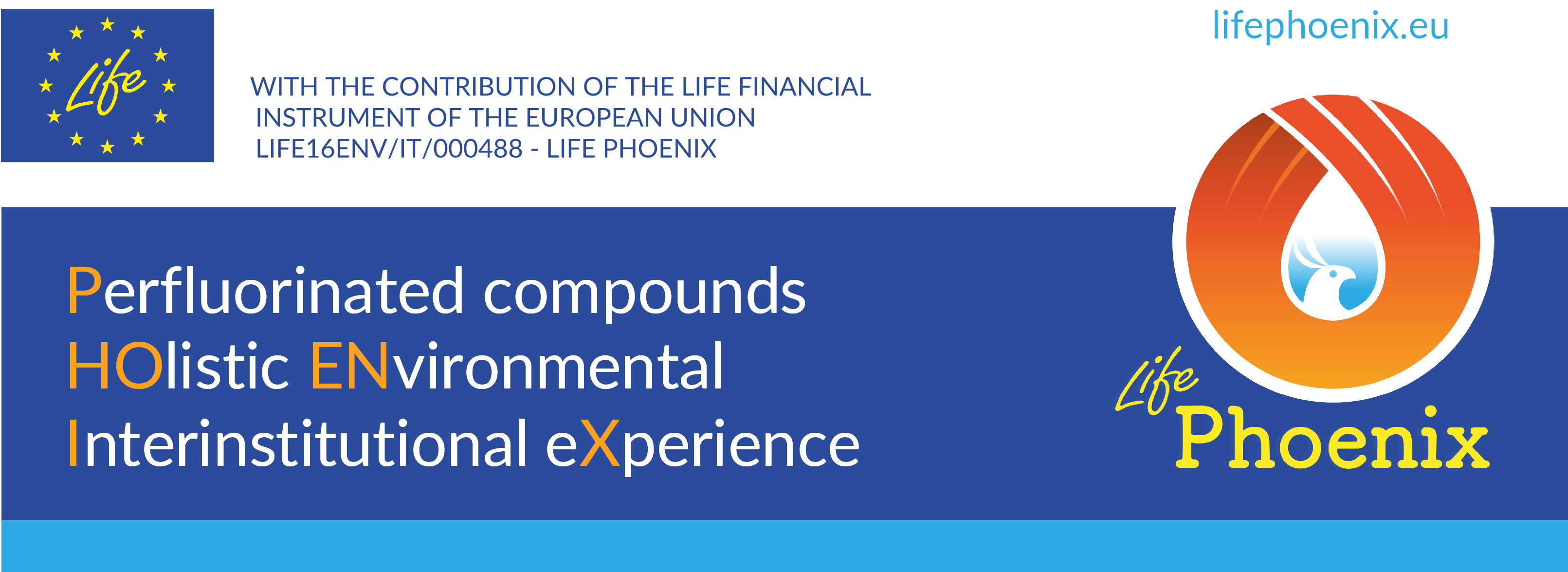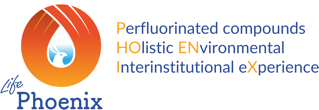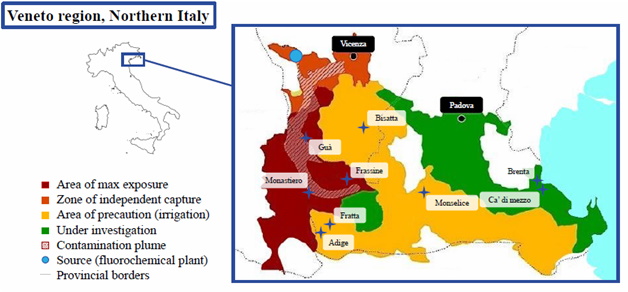LIFE PHOENIX: preliminary results after two years of activity - Life Phoenix

The project main goal is to implement a governance model of pollution event, with special attention to PMOCs and, among these, to short chain PFASs, developing tools transferable to other geographical contexts characterised by episodes of similar environmental contamination but also proposes mitigation strategies based on innovative technologies.
The first goal has been reached by improving and refining the methods for PFAS analysis available in literature for all kind of waters, for sediment and different soils, and for vegetable/animal tissues. In general, methods for the analysis of PFAS include an extraction step from the matrix, eventually a clean-up step on reverse phase according to the complexity of the same matrix and the final analysis and quantification with liquid chromatography coupled with mass spectrometry (LC/MS) technique.
The results from samples collected during the first year showed that PFASs concentrations in water, expressed as a sum of selected compounds, ranged from 0.03 to 0.78 µg/L (median = 0.11 µg/L). Instead, levels recorded in soil were between 0.15 and 9.20 ng/g dry weight (median = 0.54 dw) while the values found in plants ranged from 0.30 to 13.40 ng/g wet weight (median = 2.93 ng/g ww).
In general, these preliminary results seem to suggest that plants are not significantly impacted by the PFAS contamination, even if the largest number of positive results were detected in plants from the more polluted areas, according with classification based on previous studies carried out on inhabitants. However, most of the positive findings in vegetable regards non- edible species (Phragmites australis) and risk to human health can not yet be evaluated. Analysis of samples collected during the last months are now in progress.
Finally, during the first year, plant absorption mechanisms were deepened through two exposure experiments, carried out on duckweed and chicory, respectively. The obtained results were reported in as many papers titled “Evaluation of morpho-physiological traits and contaminant accumulation ability in Lemna minor L. treated with increasing perfluorooctanoic acid (PFOA) concentrations under laboratory conditions” (Pietrini et al., 2019) and “Uptake and translocation of perfluoroalkyl acids (PFAA) in red chicory (Cichorium intybus L.) under various treatments with pre-contaminated soil and irrigation water” (Gredelj et al., 2019) published on Science of the Total Environment.
Questo sito fa uso di cookie (tecnici e analitici ad essi assimilabili) per migliorare l'esperienza di navigazione degli utenti e per raccogliere informazioni sull'utilizzo del sito stesso. Oltre ai precedenti il presente sito contiene componenti di terze parti (Facebook, Twitter, Google) che utilizzano cookie di profilazione a scopi pubblicitari per i quali e' necessario prestre il consenso. Proseguendo nella navigazione nel sito si accetta l'uso di tutti i cookie di terze parti precedentemente elencati.


